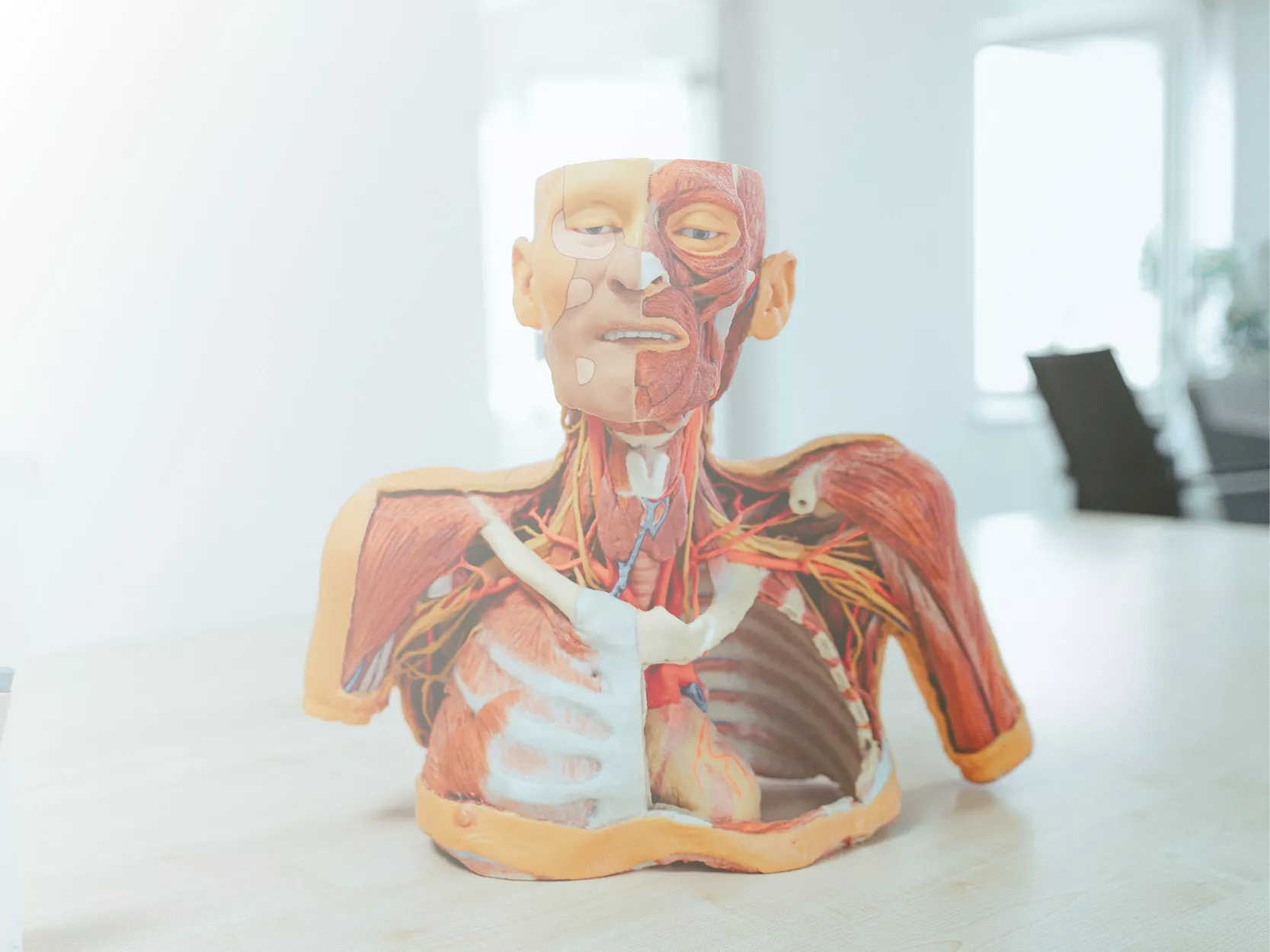Produktinformationen "Tuberculosis"
Klinische Vorgeschichte
Eine 37-jährige Frau mit unbehandeltem HIV und Lungentuberkulose klagt über zunehmende Rückenschmerzen im Brustbereich, leichtes Fieber, Schüttelfrost und Gewichtsverlust. Bei der Untersuchung waren mehrere Brustwirbel druckempfindlich. Blutwerte zeigten erhöhtes Kalzium und BSG. Im Röntgen zeigten sich lytische Läsionen. Während des Aufenthalts entwickelte sie eine Urosepsis und verstarb.
Pathologie
Im Präparat der Brustwirbel finden sich multiple lytische Defekte mit nekrotischem Material und verdichteter Knochenrinde. Die Infektion hat sich auf Bandscheiben und das umliegende Gewebe ausgebreitet. Dies ist ein tuberkulöses Knochenmark (Pott-Krankheit).
Weitere Informationen
Tuberkulose (TB) ist eine chronische Infektionskrankheit, verursacht durch Mycobacterium tuberculosis und durch Tröpfcheninfektion übertragbar. Risikofaktoren sind Immunsuppression (HIV, Steroide), Mangelernährung und Endemiegebiete. Die meisten Infektionen verlaufen latent, können aber reaktivieren. Knochen-TB tritt bei 1–3 % der Fälle auf, Pott-Krankheit macht 40 % davon aus. Sie verursacht Knochenschäden, Wirbelkollaps und neurologische Ausfälle. Diagnose erfolgt durch Anamnese, Röntgen, Sputumkultur und Biopsie.
Eine 37-jährige Frau mit unbehandeltem HIV und Lungentuberkulose klagt über zunehmende Rückenschmerzen im Brustbereich, leichtes Fieber, Schüttelfrost und Gewichtsverlust. Bei der Untersuchung waren mehrere Brustwirbel druckempfindlich. Blutwerte zeigten erhöhtes Kalzium und BSG. Im Röntgen zeigten sich lytische Läsionen. Während des Aufenthalts entwickelte sie eine Urosepsis und verstarb.
Pathologie
Im Präparat der Brustwirbel finden sich multiple lytische Defekte mit nekrotischem Material und verdichteter Knochenrinde. Die Infektion hat sich auf Bandscheiben und das umliegende Gewebe ausgebreitet. Dies ist ein tuberkulöses Knochenmark (Pott-Krankheit).
Weitere Informationen
Tuberkulose (TB) ist eine chronische Infektionskrankheit, verursacht durch Mycobacterium tuberculosis und durch Tröpfcheninfektion übertragbar. Risikofaktoren sind Immunsuppression (HIV, Steroide), Mangelernährung und Endemiegebiete. Die meisten Infektionen verlaufen latent, können aber reaktivieren. Knochen-TB tritt bei 1–3 % der Fälle auf, Pott-Krankheit macht 40 % davon aus. Sie verursacht Knochenschäden, Wirbelkollaps und neurologische Ausfälle. Diagnose erfolgt durch Anamnese, Röntgen, Sputumkultur und Biopsie.
Erler-Zimmer
Erler-Zimmer GmbH & Co.KG
Hauptstrasse 27
77886 Lauf
Germany
info@erler-zimmer.de
Achtung! Medizinisches Ausbildungsmaterial, kein Spielzeug. Nicht geeignet für Personen unter 14 Jahren.
Attention! Medical training material, not a toy. Not suitable for persons under 14 years of age.



































